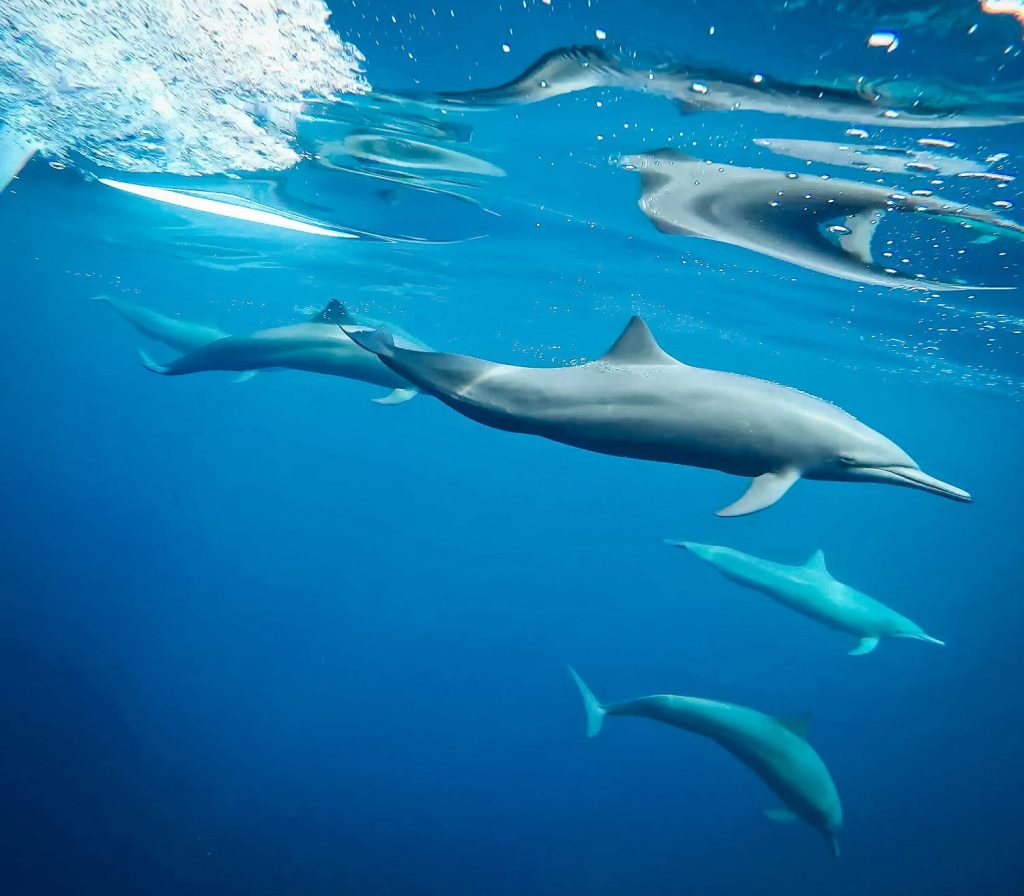
Spinner dolphins. One of the last new encounters I really enjoyed, was a playful pod of Spinner Dolphins (Stenella longirostris). It was the first time I ever saw these animals, and now it’s on my top list and I’m looking forward to seeing them again! They are super fun creatures, and the joy and energy they radiate is contagious. Surrounding our boat and swimming with us, spinning and making lots of noise, they filled us up with their joy and put a big smile on our faces.
Locally known as Tornillos (screws), they get their name from their spectacular acrobatic and aerial behavior. They leap out from the water into the air 3 meters (around 9 feet) and spin around their longitudinal axis repeatedly. They can turn up to 7 times before they fall back into the water! They seem to become especially acrobatic after they change from resting behavior to foraging. It’s believed these behaviors are primarily for acoustic signaling or communication, but can also be a way to remove ectoparasites, such as remoras, or courtship behavior.
They inhabit tropical and sub-tropical waters worldwide, with 4 different subspecies, very different from each other in form and color pattern. They are probably one of the most abundant dolphins in the world. Spinner dolphins are relatively small compared with other species. The species’ name, longirostris, is Latin for “long beak,” referring to their elongated rostrum.
Individual dolphins can be identified by their unique dorsal fins. Researchers take photographs of the dolphins’ dorsal fins and then match the shape, nicks, and notches in each fin to a catalog of known individuals.
Spinner dolphins feed at night on species including small fish, shrimp, and squid, diving sometimes more than 600m (1900 ft) to find food. They rest during the day normally, all together in a tight formation.
They are listed as Least Concern in the IUCN Red List, but the eastern subspecies, which is the one in Baja, is listed as Vulnerable.
Next time you are out in the sea, if you happen to find some very playful dolphins, a bit smaller and with a long beak, breaching, and spinning non-stop, chances are you found them! María Rodriguez-Salinas maria.rodsalinas@gmail.com, salinasmaria.com